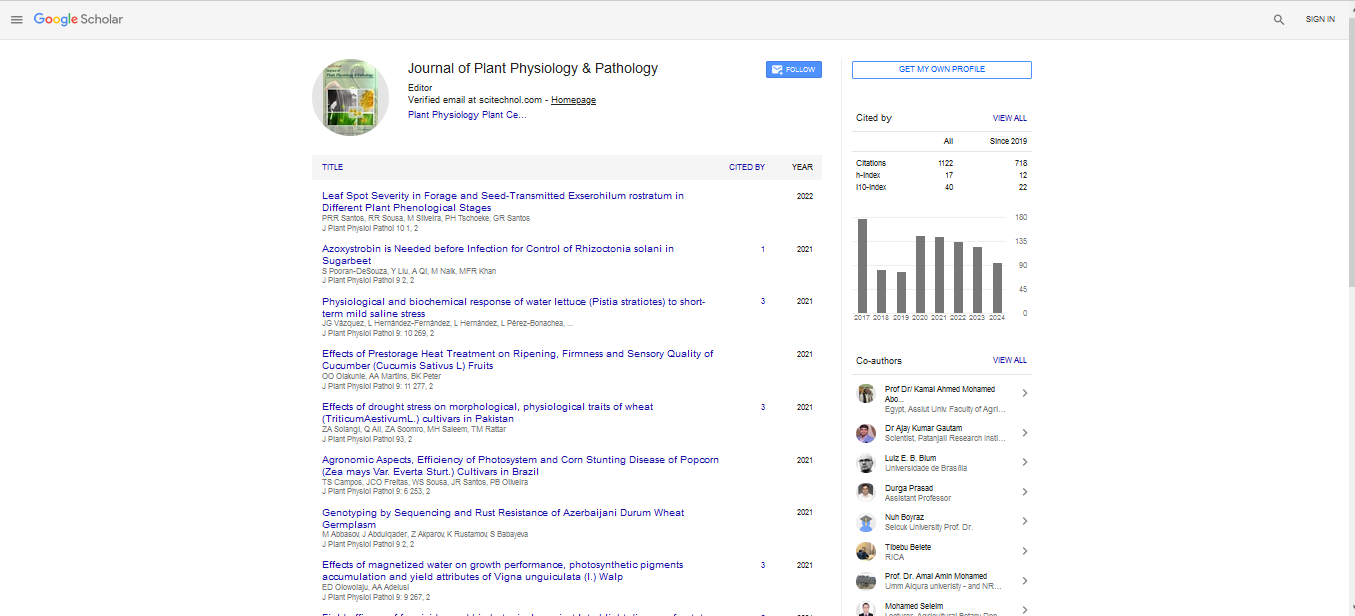Constitutively expressing of the SUC2 gene of yeast encoding of invertase apoplastic localization in transformed potato plants results in multiple biochemical and physiological changes associated with cold resistance
Deryabin A and Trunova D C
K A Timiryazev Institute of Plant Physiology of the Russian Academy of Sciences, Russia
: J Plant Physiol Pathol
Abstract
High temperature is a major environmental factor that The apoplast contains the cell-wall invertase (CWI) (EC 3.2.1.26), which catalyzes the irreversible hydrolysis sucrose (glucose + fructose). This study aim was to investigate the involvement of CWI into tolerance to LT of potato (Solanum tuberosum L., cv. Désirée) plants, which expressed the SUC2 gene. WT-potato plants served as the control. The SUC2 gene encodes the invertase of Saccharomyces cerevisiae under the control of the tuber-specific patatin B33 promoter of class I with an N-end-connected potato proteinase II inhibitor signal peptide, which provides apoplastic localization of yeast invertase. The SUC2 gene presence and its expression were shown using PCR and RT-PCR. Yeast invertase was identified by MALDI-TOF MS analysis. A soluble form of the yeast invertase was present in the apoplast, and it was weakly adsorbed onto the cellular wall. The increased activity of the CWI in transformed plants compared to that in the WT-plants ones promoted more active accumulation of fructose in the apoplast, glucose and sucrose in the leaves and especially, glucose in the roots. The transformed plants were notable for a higher level of sugars in the leaves and, therefore, for a low the rate of lipid peroxidation as compared with the WT-plants. Thus, the potato line with the integrated SUC2 gene is a convenient tool to study the role of the CWI during formation resistance to LT and could be found some application in biological engineering.
Biography
 Spanish
Spanish  Chinese
Chinese  Russian
Russian  German
German  French
French  Japanese
Japanese  Portuguese
Portuguese  Hindi
Hindi 
